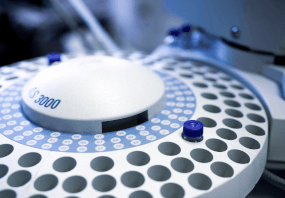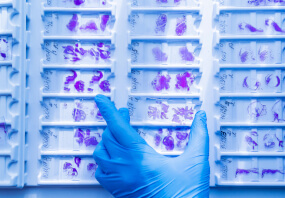General description
T-cell surface protein tactile (UniProt: Q3U0X8; also known as Cell surface antigen CD96, T cell-activated increased late expression protein, CD96) is encoded by the Cd96 gene (Gene ID: 85444) in murine species. CD96 is a single-pass type I, disulfide-linked, homodimeric, membrane glycoprotein protein of the poliovirus receptor (PVR, CD155)-nectin family that is synthesized with a signal peptide (aa 1-21), which is subsequently cleaved off to produce the mature form that contains an extracellular domain (aa 22-536), a transmembrane domain (aa 537-557), and a cytoplasmic domain (aa 558-602). It contains two Ig-like V-type 2 domains (aa 24-134 and 138-244) and one Ig-like C2-type domain (aa 250-355). These three Ig-like domains are separated from the transmembrane domain by a long region that is rich in proline, serine, and threonine. The cytoplasmic region contains a proline-rich tandem that is flanked by arginine and lysine residues and represents binding site for SH3 domain containing signaling components. CD96 is expressed mainly by cells of hematopoietic origin, in particular on T and NK cells. It is involved in adhesive interactions of activated T and NK cells during the late phase of the immune response. It promotes NK cell-target adhesion by interacting with CD155 (PVR) present on target cells. Clone 6A6 is reported to bind to the first Ig domain of CD96 and competes with CD155 binding. It is shown to significantly reduce experimental lung metastases in murine models at low doses. (Ref.: Aguilera, AR., et al. (2018). OncoImmunology 7(5); e1424677; Georgiev, H., et al. (2018). Front. Immunol. 9; 1072; Meyer, D., et al. (2009). J. Biol. Chem. 284(4); 2235-2244).
Specificity
Clone 6A6 is a rat monoclonal antibody that detects murine CD96. It targets an epitope within the extracellular domain
Immunogen
Purified recombinant Murine CD96.
Application
Quality Control Testing
Evaluated by Flow Cytometry in EL4 cells.
Flow Cytometry Analysis: 1 μg of this antibody detected CD96 in one million EL4 cells.
Tested Applications
Flow Cytometry Analysis: A representative lot detected CD96 in Flow Cytometry applications (Seth, S., et al. (2007). Biochem Biophys Res Commun. 364(4):959-65; Aguilera, A.R., et al. (2018). Oncoimmunology. 7(5):e1424677; Chiang, E.Y., et al. (2020). Eur J Immunol. 50(6):891-902).
ELISA Analysis: A representative lot detected CD96 in ELISA applications (Aguilera, A.R., et al. (2018). Oncoimmunology. 7(5):e1424677) .
Inhibition Assay: A representative lot of this antibody blocked CD96-CD155 interaction. (Seth, S., et al. (2007). Biochem Biophys Res Commun. 364(4):959-65; Aguilera, A.R., et al. (2018). Oncoimmunology. 7(5):e1424677; Georgiev, H., et al. (2018). Front Immunol. 9:1072).
Note: Actual optimal working dilutions must be determined by end user as specimens, and experimental conditions may vary with the end user
Anti-CD96, clone 6A6, Cat. No. MABF2790, is a rat monoclonal antibody that detects CD96 (TACTILE) and is tested for use in ELISA, Flow Cytometry, Inhibition, Assay.
Physical form
Purified rat monoclonal antibody IgG2a in PBS without preservatives.
Storage and Stability
Store at -10°C to -25°C. Handling Recommendations: Upon receipt and prior to removing the cap, centrifuge the vial and gently mix the solution. Aliquot into microcentrifuge tubes and store at -20°C. Avoid repeated freeze/thaw cycles, which may damage IgG and affect product performance.
Other Notes
Concentration: Please refer to the Certificate of Analysis for the lot-specific concentration.
Disclaimer
Unless otherwise stated in our catalog or other company documentation accompanying the product(s), our products are intended for research use only and are not to be used for any other purpose, which includes but is not limited to, unauthorized commercial uses, in vitro diagnostic uses, ex vivo or in vivo therapeutic uses or any type of consumption or application to humans or animals.
- UPC:
- 51201616
- Condition:
- New
- Availability:
- 3-5 Days
- Weight:
- 1.00 Ounces
- HazmatClass:
- No
- MPN:
- MABF2790-100UG












